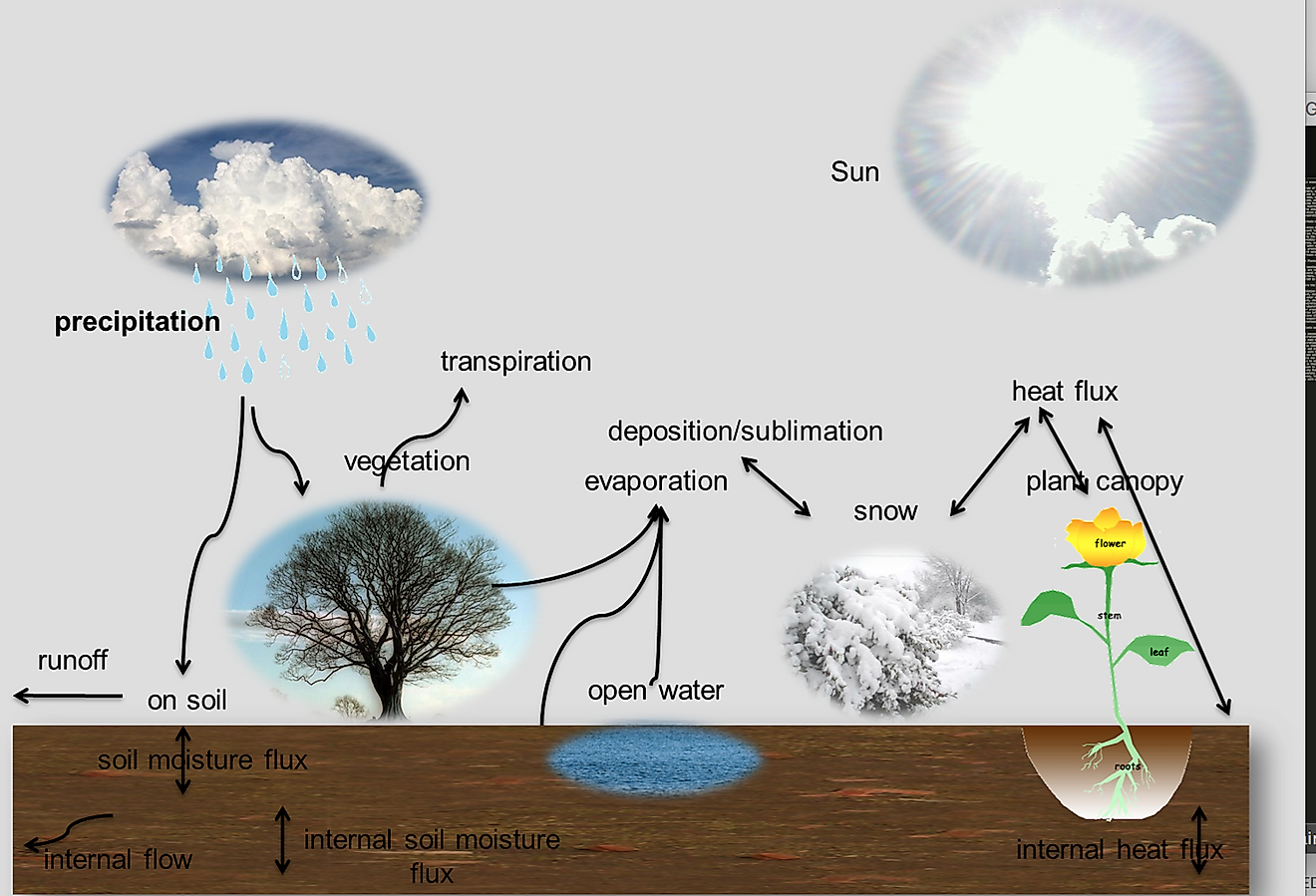What Is Evapotranspiration?

What is Evapotranspiration?
The circulation of water between oceans, the land, the atmosphere, and the biosphere is one of the most important cycles on earth and is called the hydrological cycle. Water falls from the sky as precipitation (rain, snow, etc.). Most of it falls on oceans (78%) and the rest fall over land, where part of the water is absorbed by plants, while the remaining forms rivers, or soaks deep into the ground to underground water reservoirs. Evapotranspiration is the process that moves water back into the atmosphere. The loss of water from the land surface by evaporation and plants by transpiration are the two processes responsible for evaporation.
The Methods of Evapotranspiration
Evaporation denotes the conversion of liquid water to water vapor and a consequent loss of the former from the evaporating surface. Direct radiation from sun and air temperature cause water to turn to its vapor form. As the temperatures increases, more water evaporates. However, if the humidity (or amount of water vapor present) in the surrounding air increases, evaporation decreases. If there is wind, it moves this water vapor laden air away while dry air takes its place. Thus higher the wind speed, greater is the rate of evaporation. Transpiration is the process by which water contained in plant tissues is lost to the atmosphere by the process of evaporation.
How Do Plants Lose Water?
Small openings called stomata located on the dorsal or under-surface of leaves are responsible for the loss of water from plants. Transpiration has several beneficial effects on the plant. It does cool the plant down. Furthermore, it creates a pressure that helps pull up water and nutrients collected by the roots up to the leaves, through the tissue xylem.
What are the Factors Influencing Evapotranspiration?
In addition to solar radiation, air temperature, humidity, soil water content, etc., are some other factors that influence transpiration. When soil water availability decreases, so does transpiration. During drought, when the topsoil is dry, the plants can begin to wilt. Transpiration also depends on the type of the plant. Plants in dry areas have adaptations that reduce transpiration, unlike trees and plants in wetter areas. The geography of a place, namely its latitude and climate, can also influence evapotranspiration. Evapotranspiration is higher at locations close to the Equator. If the area receives little rainfall, then evapotranspiration can reach 100% of the total precipitation as in the southwestern United States.
How do Plants and Animals Cope with Evapotranspiration?
Plants possess the ability to monitor the amount of water lost by transpiration. The short-term mechanism is to close the stomata. Some plants even keep their stomata closed during the day when the rate of transpiration is higher. In addition, they can have many physical features that help them cope with heat or dryness in the environment. In hot and dry deserts, the cacti leaves are small and reduced to hard spines with fewer stomata. The stem is thick and flattened with a hard and green wall which produces food by photosynthesis. The hard waxy wall prevents any evaporation. Among animals, camels in the Sahara can survive for six to seven months without drinking water, as they make do with water in their food. Animals also tend to rest in the shade in the afternoon to avoid the sun and are active in mornings or evenings. In temperate Mediterranean regions, the summers are dry. Here, annuals grow and complete their cycle to avoid the dry summer. Some trees are deciduous, losing their leaves in summer. Evergreen trees have tough leaves with a special coating to prevent evaporation.











